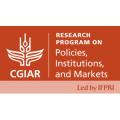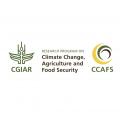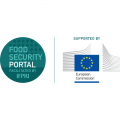Outline
- 01Summary
- 02Reference Scenario
- 03Definition of Scenarios
- 04Interactive Scenarios
- 05Partners
UNDERLYING DATA AND RESOURCES
You may download PDFs or charts by clicking the buttons below
Who we are
This webtool was developed by Soonho Kim, Nicola Cenacchi, the IMPACT modeling team at IFPRI (Keith Wiebe, Tim Sulser and Shahnila Dunston) and the Food Security Portal team (Rob Vos, Betina Dimaranan, Brendan Rice, and Sara Gustafson). For any comments or feedback please contact Soonho Kim (soonho.kim@cgiar.org)
The International Model for Policy Analysis of Agricultural Commodities and aTrade (IMPACT) explores policies that can help feed the world, reduce poverty, and protect the natural resource base. Here we examine how alternative investment scenarios affect agricultural production, productivity, and food security for the period 2010-2050 compared to a reference scenario.
The International Model for Policy Analysis of Agricultural Commodities and Trade (IMPACT) explores policies that can help feed the world, reduce poverty, and protect the natural resource base. Here we examine how alternative investment scenarios affect agricultural production, productivity, and food security for the period 2010-2050 compared to a reference scenario.
These results are drawn from a recent report that provides a quantitative assessment of the impacts of alternative investment options on the CGIAR’s objectives relating to poverty, food and nutrition security, and natural resources and ecosystem services in the context of changes in population, income, technology, and climate to 2050 (Rosegrant et al. 2017). The report was developed in collaboration with scientists from all 15 CGIAR Centers and was intended to inform decision-making by the CGIAR and its partners in relation to agricultural research and development.
Reference Scenario
The reference scenario is based on “middle-of-the-road” assumptions about changes in population and income along with rapid climate change. The population and income assumptions are based on the IPCC’s Shared Socio-Economic Pathway 2 (SSP 2) in which the global population reaches 9.2 billion in 2050 and average incomes reach USD 25,000 per person. The climate change assumptions are based on the IPCC’s Representative Concentration Pathway 8.5 (RCP 8.5) and the HadGEM general circulation model (GCM). Investments in the reference scenario are based on historical trends as well as expert opinion about future changes.
Definition of Scenarios
REFERENCE
REF: Middle-of-the-road socio-economic pathway (SSP 2) and rapid climate change (RCP 8.5/HadGEM)
R & D
HIGH+NARS: High increase in R&D investment plus NARS investments
HIGH: High increase in R&D investment across the CGIAR portfolio
MED: Medium increase in R&D investment across the CGIAR portfolio
HIGH+RE: High increase in R&D investment plus increased research efficiency
REGION: High increase in R&D investment in South Asia and Sub-Saharan Africa
COMPREHENSIVE
COMP: Comprehensive scenario; This scenario is a combination of 4 scenarios: HIGH+RE, IX+WUE, ISW, & RMM.
IRRIGATION
IX: Investments in irrigation expansion
IX+WUE: Investments in irrigation expansion and water use efficiency
ISW: Investments to Increase soil water holding capacity
INFRASTRUCTURE
Infrastructure-RMM: Infrastructure improvements to improve market efficiency through the reduction of transportation costs and marketing margins
Interactive Scenarios
Partners
We gratefully thank our partners for their support.

The CGIAR Research Program on Policies, Institutions, and Markets (PIM)

The CGIAR Research Program on Climate Change, Agriculture and Food Security
